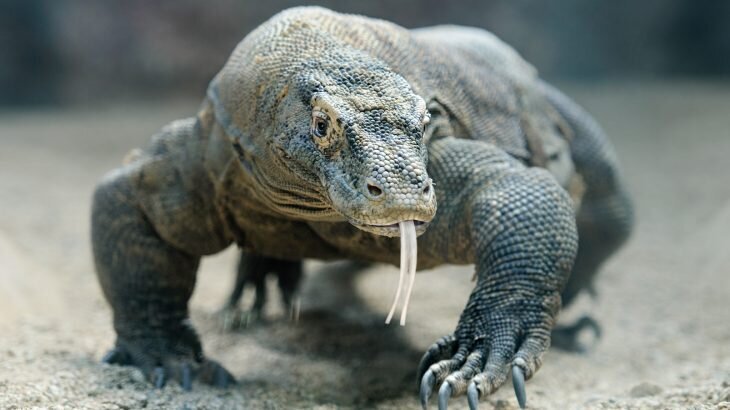Komodo Dragon | 01 Aug 2019
Recently, the Indonesian government ordered to relocate the residents of an island in eastern Indonesia called the island of Komodo in a bid to conserve rare Komodo dragons.
- This eviction has been ordered with a view for the recovery of the reptiles and the Komodo National Park (the only habitat for the world’s largest lizard species).
- The recovery effort of this national park was needed due to the deterioration caused by excessive tourism.
- However, shutting down of such ecological sites is not the right approach unless it is an ecological emergency as the relocation of the residents may lead to loss of livelihood.
- Instead, the system could be revamped to build local communities into the revenue generation process and manage tourism flows.
Komodo Dragon
- The Komodo dragon is the largest living species of lizard.

- They are listed as Vulnerable by the IUCN.
- Komodo dragons hunt and prey including invertebrates, birds, and mammals.
-
Comparison of Komodo’s venom with Snake’s venom:
-
It is claimed that Komodo's have a venomous bite, which has been shown to secrete an anticoagulant.
-
An anticoagulant is a compound that prevents the victim's blood from clotting, causing it to bleed to death.
-
- Snake venoms are composed of a complex collection of toxins, enzymes, and non-toxic substances. It can be classified into three main types: Neurotoxins, Hemotoxins, and Cytotoxins.
- Neurotoxins are chemical substances that are poisonous to the nervous system. Neurotoxins work by disrupting chemical signals (neurotransmitters) sent between neurons. E.g.: King Cobra
- Hemotoxins are blood poisons that disrupt normal blood coagulation processes. They work by causing Red Blood Cells (RBCs) to burst open, by interfering with blood clotting factors, and by causing tissue death and organ damage. E.g.: Vine snake
- Cytotoxins are poisonous substances that destroy body cells. Cytotoxins lead to the death of most or all of the cells in a tissue or organ. E.g.: Puff adders, Mozambique spitting cobras
- Cytotoxins help to partially digest the prey before it is even eaten.
- Cytotoxins are usually specific to the type of cell they impact. E.g.: Cardiotoxins are cytotoxins that damage heart cells. Mycotoxins target and dissolve muscle cells.
-
